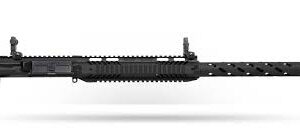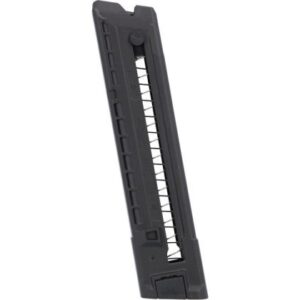Air gun ammo is a critical component for airguns, and it comes in various types, shapes, and calibers, each designed for specific purposes like target shooting, pest control, or hunting. Here’s an overview of the most common types and details about air gun ammunition:
1. Types of Air Gun Ammo:
a. Pellets:
- Diabolo Pellets: The most common type, with a “waisted” shape. The front (head) is usually round, pointed, or flat, and the back (skirt) is wider, providing stability in flight. Ideal for accuracy and range.
- Wadcutter Pellets: Flat-nosed, excellent for target shooting and competitions. They create clean, round holes in paper targets.
- Pointed Pellets: Designed for deeper penetration, often used for hunting small game and pest control.
- Hollow Point Pellets: These pellets expand upon impact, increasing damage. Good for hunting and pest control at closer ranges.
- Round Nose (Domed) Pellets: A versatile pellet good for long-range shooting, offering a balance between accuracy and penetration.
b. BBs:
- Steel BBs: Typically .177 caliber and used in smoothbore airguns. BBs are spherical and less accurate than pellets but are commonly used in multi-pump or CO2-powered airguns.
- Lead BBs: Less common, they are softer than steel BBs, reducing the risk of ricochets but can still be used for casual shooting and low-power guns.
c. Slugs:
- Airgun Slugs: Designed for higher-powered PCP (Pre-Charged Pneumatic) air rifles, airgun slugs are heavier and resemble traditional firearm bullets. They have better ballistic coefficients (BC) and retain energy over longer distances, making them effective for hunting.
2. Common Calibers:
- .177 Caliber (4.5mm): The most popular airgun ammo for target shooting and plinking. Due to its higher velocity and flatter trajectory, it’s ideal for competition shooting but less effective for hunting larger game due to lower impact energy.
- .22 Caliber (5.5mm): Heavier than .177, this caliber provides more knockdown power, making it better for hunting small game or pest control. It has a slower velocity but higher impact energy.
- .25 Caliber (6.35mm): Even heavier than .22, this caliber is suited for hunting larger small game. It offers more impact energy and penetration but has a slower velocity and a more pronounced drop over distance.
- Other Calibers (.30, .35, .45, and up): Used in high-powered PCP air rifles, these larger calibers are for serious hunting and can take down larger game animals at moderate ranges.
3. Materials:
- Lead: Most airgun ammo is made from lead, which provides good weight and energy retention. However, lead can deform on impact, making it great for hunting.
- Steel: BBs are usually made from steel, but steel can ricochet easily and may not be safe for all applications, especially at higher velocities.
- Non-Toxic Pellets: For environmentally conscious shooters or areas where lead is banned, there are tin, zinc, or composite pellets, though they may be lighter and not retain energy as well as lead.
4. Specialty Ammunition:
- Tracer Pellets: Glow in the dark or lit pellets, mainly for fun or tracking shots at night.
- Non-lead pellets: Usually made from tin or other materials for use in areas where lead is banned.
5. Choosing the Right Ammo:
- Accuracy: For target shooting, lighter pellets like wadcutters or round-nose designs in .177 caliber offer better accuracy.
- Penetration: Pointed or heavier round-nose pellets in .22 or .25 caliber are better for hunting and pest control.
- Expansion: Hollow-point pellets expand on impact and are ideal for hunting smaller animals at close to medium range.
- Range: Heavier pellets, slugs, or domed pellets are better for long-distance shooting since they retain more energy.
6. Factors Affecting Ammo Performance:
- Pellet Weight: Heavier pellets (measured in grains) are slower but hit harder, while lighter pellets are faster but might be deflected by wind or lose energy faster over long distances.
- Barrel Fit: The fit of the pellet in the barrel (tight or loose) can impact accuracy. A proper fit ensures that the pellet engages the rifling and spins correctly.
- Airgun Power: Higher-powered airguns (especially PCP) perform better with heavier pellets or slugs, while lower-powered guns may do better with lighter pellets for a flatter trajectory.
Conclusion:
Air gun ammo varies widely in terms of shape, material, and caliber, each type serving a particular need. Selecting the right ammo depends on the purpose of shooting (target practice, hunting, or pest control), the airgun’s power, and the desired accuracy or impact energy.
AIR GUN AMMO
$20.00 – $30.00
This product has multiple variants. The options may be chosen on the product page

